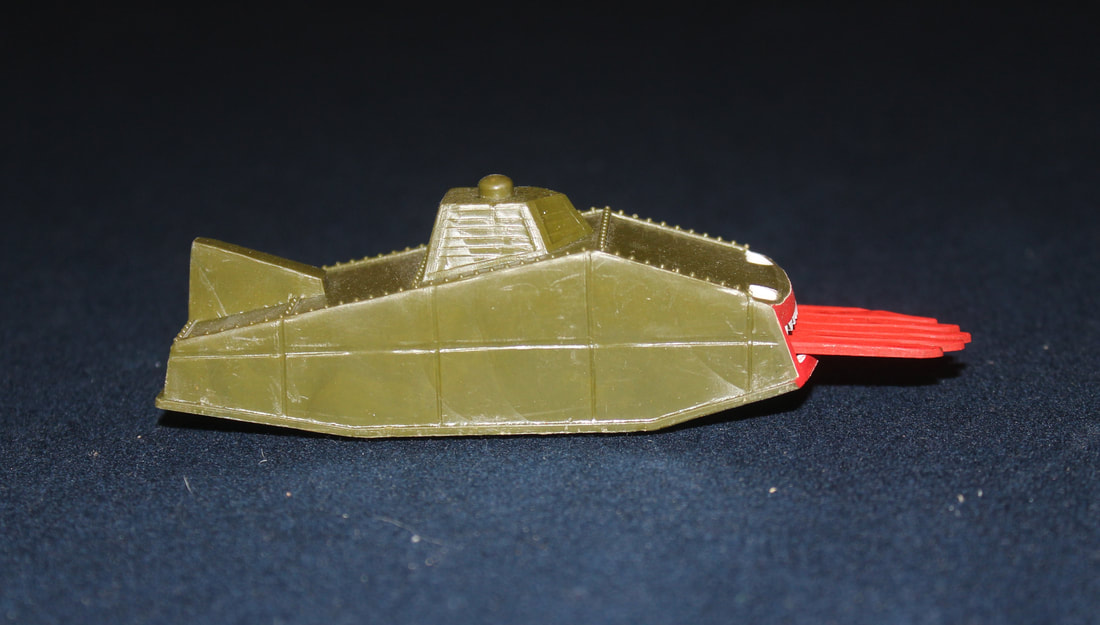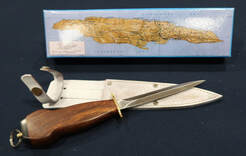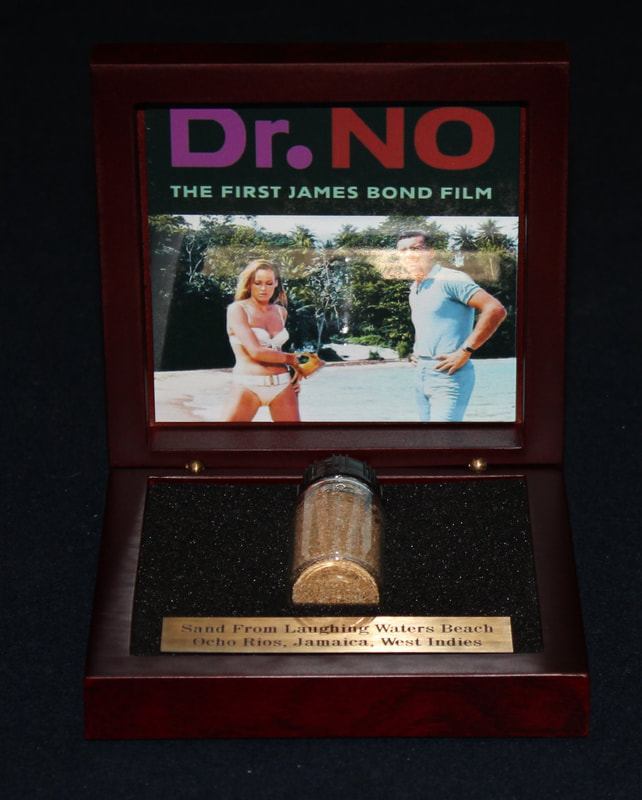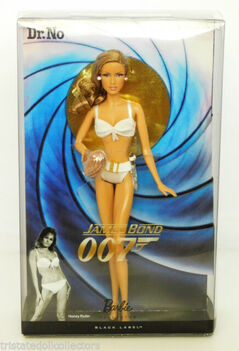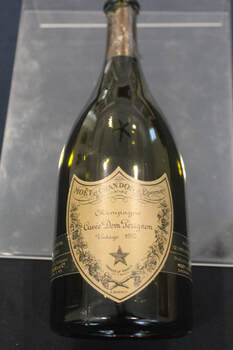- Home
- How It All Started
- What's New
-
Movies
- Dr. No
- From Russia With Love
- Goldfinger
- Thunderball
- You Only Live Twice
- On Her Majesty's Secret Service
- Diamonds Are Forever
- Live and Let Die
- The Man With the Golden Gun
- The Spy Who Loved Me
- Moonraker
- For Your Eyes Only
- Octopussy
- A View To A Kill
- The Living Daylights
- License To Kill
- Goldeneye
- Tomorrow Never Dies
- The World Is Not Enough
- Die Another Day
- Casino Royale
- Quantum of Solace
- Skyfall
- Spectre
- No Time To Die
- Never Say Never Again
- Publications
- Miscellaneous
- Contact Me
Dr. No
The popularization of Ian Fleming's creation began with Dr. No, when Albert R. "Cubby" Broccoli and Harry Saltzman brought James Bond to the big screen. The producers created the 'Bond formula' utilizing the same basic actors, crew and plot structure for the next several films, establishing a continuity that defined the movie series.
For collectors, the movie was rather thin on collectible items. Not a lot of bells and whistles, but basic gadgets such as the knives and guns were available. Perhaps the most unusual collectible was the Dragon Tank. Any item from 1962 associated with this film is a real treasure today. Some of the most valuable might be the movie posters used in the cinemas.
For collectors, the movie was rather thin on collectible items. Not a lot of bells and whistles, but basic gadgets such as the knives and guns were available. Perhaps the most unusual collectible was the Dragon Tank. Any item from 1962 associated with this film is a real treasure today. Some of the most valuable might be the movie posters used in the cinemas.
HONEY RYDER'S BIKINI
|
Surely one of the top-10 iconic scenes in movie history was when the tanned and beautiful Ursula Andress emerged, almost goddess-like, out of the Caribbean Sea in her white bikini in Dr. No. Designed by Andress and sewn for her while on location filming in Jamaica, the swimsuit was made of cotton. The lower part of the bikini was partially covered by a wide white British Army belt with brass buckles and fittings; a scabbard on the left side designed to hold her diving knife is also shown here. The diving knife reproduction was made by Steve Poole and Ed Maggiani. There was only one bikini made and worn by Andress, and she retained it after filming ended. Andress auctioned off the iconic bikini in 2001. This reproduction of the Honey Ryder bikini is faithful to the original. It is easily the most instantly-recognizable piece in my collection, even to the most casual of Bond fans, men and women alike.
|
The Stolen GoyaOne of the "inside' jokes incorporated into Dr. No involved Goya's painting of The Duke of Wellington. Shortly before filming began, the painting was stolen from the museum in London where it was on display. The brazenness of the theft and lack of suspects added to the notoriety of the crime. Ken Adam painted a replica copy and put it on display in Dr. No's lair. James Bond did a double-take when he spotted the Goya painting in Dr. No's possession!
|
LE CERCLE CASINO PLAQUES
When Dr. No was filmed, no one had any idea how successful the film and the franchise would become. Little regard was given to cataloguing or saving any of the props used in the filming, so screen-used items are rare finds. These plaques were in actual play at the Le Cercle gaming room of the Les Ambassadeurs Club in London when the film was made in 1962. The Club loaned its plaques to the movie production and the ones displayed here are likely some of those seen in the famous introduction scenes between James Bond (Sean Connery) and Sylvia Trench (Eunice Gayson), or as set dressing, filmed on the casino set at Pinewood Studios. The condition of these particular casino plaques is near-excellent, amazing in light of their age and their storage conditions for 50+ years.
CASINO PLAQUES USED FOR SOUND DUBBING
|
As was common practice, the casino scenes in Dr. No utilized post-production dubbing to enhance the sound clarity and realism of the casino play being filmed. Norman Wanstall was employed as a dubbing editor on the film, and he used casino plaques he had acquired to produce the sounds of the filmed plaques in play, and also of their being gathered together in stacks. Norman held onto these dubbing plaques for many years, and eventually transferred some to Graham Rye, Editor of '007 Magazine'. These plaques were obtained from the individual who acquired them from Graham and framed them as displayed here. It is nearly impossible to find items used in the filming and production of Dr. No, for no one at that time imagined how desirable such items would become to collectors. It seems sheer luck that these dubbing plaques survived and have a history back to Norman Wanstall.
|
|
Factory Entertainment produced this limited-edition replica set by copying the only surviving original plaque props in the EON Productions archive. Each set contains 3 plaques in £50, £100 and£500 denominations. Each plaque is routed from heavyweight acrylic instead of obsolete vintage materials, with flame-polished edges and features an inlaid mother-of pearl effect, screen-printed artwork and engraved serial numbers. My set is Number 45 of 1530. The replica set is nice, but owning the real casino plaques in use at the time of filming Dr. No is better.
|
|
I recently had the opportunity to travel to Jamaica and visit several Bond-associated locations that are normally not open to tourists. One such location is Laughing Waters Beach, which was where Honey Ryder's exit from the water in her bikini was filmed. Time and storms have altered the beach significantly, but the iconic beachfront waterfall is still instantly recognizable. A private beach at the time of filming, it is now owned by the government of Jamaica, their having placed a hydroelectric power plant upstream and up the hill from the beach. I collected some sand from the beach and created this display box as a memento of my visit.
|
|
A copy of the Fifth Draft Screenplay, dated January 8, 1962, of Dr. No. It bears the signatures of Sean Connery and Ursula Andress. The script came with a Certificate of Authenticity from the seller, but no back-up evidence of authenticity has been provided. I have made no attempt to authenticate either of the signatures.
|
Proudly powered by Weebly
- Home
- How It All Started
- What's New
-
Movies
- Dr. No
- From Russia With Love
- Goldfinger
- Thunderball
- You Only Live Twice
- On Her Majesty's Secret Service
- Diamonds Are Forever
- Live and Let Die
- The Man With the Golden Gun
- The Spy Who Loved Me
- Moonraker
- For Your Eyes Only
- Octopussy
- A View To A Kill
- The Living Daylights
- License To Kill
- Goldeneye
- Tomorrow Never Dies
- The World Is Not Enough
- Die Another Day
- Casino Royale
- Quantum of Solace
- Skyfall
- Spectre
- No Time To Die
- Never Say Never Again
- Publications
- Miscellaneous
- Contact Me
